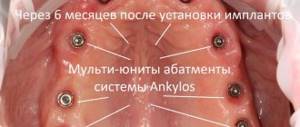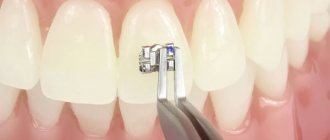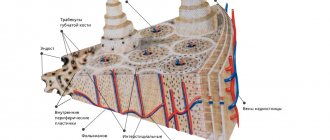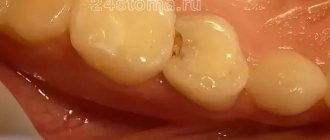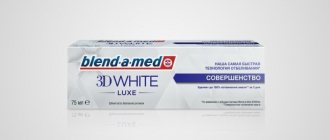Dental decoration is steadily gaining popularity. Now not only pop stars can show off their shiny teeth, but everyone can too. In parallel with restorative dentistry, decorative decoration of teeth is actively developing. In this article we will tell you what grills are and their features. How to use jewelry correctly, how to take care of your teeth and prevent negative consequences?
Types of dental inlays and their scope of application
Article navigation
- What are Tabs
- Stump and restorative
- Differences from a filling
- Differences from veneers
- Indications for use
- Contraindications
- Advantages
- What are the disadvantages
- Varieties and materials
- Manufacturing and installation
- Quality assessment parameters
- Are there any complications?
- Service life and care
- What to consider when choosing
- Current prices
Question for a specialist
Destruction of chewing teeth is a big problem for modern adults.
Dietary features, the predominance of soft and sweet foods in the diet, and not always high-quality treatment of caries lead to the need for orthopedic restoration. One of the preferred methods is an inlay on the tooth, which will give it beauty and functionality for many years. Next, we will talk about what it is - an inlay for tooth restoration, what it looks like and what it is made of, how it is made, how it is placed and how much it costs.
What are grillz?
This type of jewelry looks like an overlay for one or more front teeth that can be worn at any time. They come in a wide variety of types, decorated with jewelry types of stones, metal or highly polished and smooth.
The first manufacturers of this decoration called it grills, which in Russian sounds like “lattices”. Time passed and hip-hopper Nelly, who dedicated an entire song to grillz, called them grillz, thereby renaming them and breathing new life. Russian-speaking people call these decorations differently, grillz, grills, grillz and others similar to the original.
What are Tabs
Everyone knows what fillings and crowns are. But when a dentist offers such an option as dental inlays, many people do not understand what this means. Let's figure it out.
Inlays for a tooth crown (or, as they are also called, “onlays”) refer to microprosthetics when it comes to restoring a partially destroyed natural crown. Inlays are an alternative to large fillings and they are needed when, as a result of caries, the top of the tooth is severely destroyed, but it is too early to install a dental crown and cannot be restored with a filling. An inlay is literally a missing piece of tooth that is attached to the remaining walls.
REPROSTHETICS WITH ACRYLIC PROSTHETICS - RUB 200,000.
Re-prosthetics with an acrylic bridge on a metal frame (all included) up to 12 units.
Save RUR 30,000. Call now or request a call
Dental decoration
Since ancient times, people have decorated their teeth, this is confirmed by archaeological excavations. However, little has changed over the centuries, and interest in dental decoration has not waned in the modern era. Fashion is set by popular personalities - actors, singers and freelance artists. Since about the 80s of the last century, rappers remembered the decorative decoration - grills, and after them they paid attention to the sparkling overlays and stars of the film industry.
In addition to grills, skyces are also in fashion - decorative inclusions in the crown of a tooth. However, skyces require damage to the enamel coating, which is not always acceptable for practical purposes. Grills can simply be put on top of a tooth or dentition, achieving a greater aesthetic effect without harming the enamel.
In addition, grills have no contraindications like skyes. They can be used without paying attention to the structure and color of the enamel, the presence of caries or installed crowns. This operating feature has made grills widely popular, and now they can be purchased in online stores. However, let’s consider all the features of this decoration in order.
Differences in purpose - stump and restorative
The topic of today's article is developing around microprosthetic inlays; they are needed to restore a natural crown and are therefore called “restorative”. Restorative ones are attached to the outside of the tooth and are visible to anyone if they open their mouth. In fact, they are alternatives to fillings.
What is an inlay for a tooth under a crown? There is another option for permanent prosthetics - this is the stump type. It is needed not for beauty, but for strength. Stumps, as the name implies, have the shape of a tooth stump. The lower part of the stump tab is inserted into the root canals, and the upper part rises slightly above the gum and serves as a support for the crown or prosthesis. Those. the stump will not be visible, no matter how you open your mouth, because it is always hidden by an artificial crown. But, in fact, it is also restorative, but it replaces not only the apex, but also the dental canals. You can read more about this type in a separate article.
A real pro in fronts and golds. Meet Eddie Plain
Trying to unravel the mystery of the invention and the original author of the idea of decorating teeth so extravagantly, they realized that all paths lead to the unknown Eddie Plein, the owner of the Eddie's gold teeth store, located in New York. It was he who came up with the idea of putting so-called “grids” on the teeth, made of all kinds of precious metals interspersed with jewelry stones. The pioneers and trendsetters for grillz were the real giants of black culture of that time, Flava Flav (Public Enemy), Koll G Rap.
Any rap artist considers himself obligated to visit a popular dentist, certainly on the condition that this becomes known to the general public, a real pro in fronts and golds, hip-hop slang definitions of grillz. And keeping up with the times, some representatives of pop culture have purchased this accessory and are now releasing it under their own name, thereby turning a smile into a chic advertising show. This is exactly what the famous rap artist Paul Wall did.
Plein himself is in no hurry to retire and throw away the opportunity to make money from his unusual invention. Even today he continues to delight his very famous clients with these outrageous accessories. Representatives of the “Dirty South”, who have already visited the dentist, whose names are inscribed in the history of music. Among them were Ludacris, Goodie Mob.
If you get the impression that this is a purely masculine piece of jewelry, then you just have to remember the various performances of Rihanna, who shocked fans with grills of various types and colors.
Differences from a filling
Any filling is installed using the direct method, so it can be placed on the same day you contact a specialist. Filling materials – paste or powder, mixed with liquid before filling. The filling hardens in air and under the influence of a special lamp. And the service life of even the best filling is no more than 3-4 years. Afterwards it will also stand, but you need to check the quality of the fit and its shape - it still shrinks under load.
The inlay is made by an indirect method - in a dental laboratory using casts of the jaws, or more precisely, the patient’s teeth. For such microprostheses, metals, liquid and lump ceramics, blocks of zirconium and aluminum dioxide, as well as composite compositions similar to fillings are used. These microprostheses are installed on the patient ready-made, i.e. fully formed and hardened.
Dental inlays compare favorably with conventional fillings in that they allow you to restore a badly damaged tooth for a longer period of time. For example, if deep caries was discovered, and after its treatment a large cavity formed, it is better to fill it with a microprosthesis, which is created individually in a dental laboratory. This method is more preferable, since saliva may enter when placing the filling, as a result of which the entire treatment process will be ineffective. And the patient himself is not very comfortable spending a long time in the dental chair during the formation and subsequent grinding of the filling. The inlay will also last many times longer than any composite restoration.
Composite onlays for teeth
Therapeutic, or composite, onlays for teeth are used in cases where the goal is to build up a badly damaged tooth, and not just improve aesthetics. For example, they can be used in case of severe chipping of the incisor (more than half the area) or in other cases when orthopedic veneers are simply useless due to the impossibility of their installation. Such dental overlays are made using the direct method, that is, immediately on the patient’s tooth, from composite materials, hence their name – composite veneers. Therapeutic overlays have a standard color range, so in some cases the patient cannot choose the appropriate shade. The advantage of this type of onlay is that the patient receives a visible result in one visit; in addition, the price of onlays for teeth made of a composite is significantly lower than classic ceramic veneers.
Differences from veneers - and is it possible to put inlays on incisors and canines?
If we take into account the materials for manufacturing, then both veneers and inlays are, in principle, identical. Besides metal, metal veneers would look too shocking. Although some musical performers wear grills - removable analogues of veneers made of precious metals and stones. Some patients also call veneers ceramic inlays for the front teeth. But here the term “overlays” is still closer, because Veneers are applied to the tooth surface rather than inserted into a cavity.
The main difference is that any veneers are installed only on the anterior side of the frontal zone (incisors, canines and sometimes the first premolar) and serve only to give the smile high aesthetics. You cannot bite off hard food with veneers. And inlays are installed only on the chewing areas of the rows (premolars and molars), and on any side - the chewing surface, the lateral one. And you can chew any food with your teeth using these microprostheses.
Don't know what type of prosthetics to choose?
We will help in the selection, advise where to read more information and compare types of prosthetics.
Consultation with an orthopedic doctor in Moscow clinics is free! Call now or request a call
Working hours: from 9:00 to 21:00 - seven days a week
White teeth whitening pads
If the goal is only to change the shade of the enamel, dentistry uses the thinnest white overlays on teeth made of composite, as well as in the form of lumineers and ultraneers. Teeth whitening with onlays in this way is suitable only for those who have healthy enamel (or is slightly damaged). The lightening procedure itself using such plates is called restoration bleaching. It is used when traditional types of whitening, such as home, laser, oxygen and Zoom whitening, do not work. During installation, the onlays are attached to the facial surface of the front teeth. Whitening plates are not installed on chewing teeth.
If desired, the patient can always contact the doctor with a request to change the plates to new ones (of a different color) or remove them completely. Moreover, the cost of installing such onlays on teeth will be significantly lower compared to other types of restoration.
Indications for use
- chips of the dental crown are less than 50% - that is, the side walls must remain so that the inlay can be secured. If they are not there, i.e. the crown is destroyed at the root, it is necessary to consider the stump tab,
- restoration of a natural crown after massive drilling of enamel and dentin in the treatment of caries, when the installation of a composite filling is unreliable,
- replacing old fillings with more reliable and durable solutions,
- thin tooth walls and the large cavity they surround,
- increased sensitivity to chemical and thermal irritants: cold, hot, sour, sweet.
In what cases is a filling used?
Purposes of application:
- creation of a therapeutic pad for complex therapy;
- use as an insulating layer;
- temporary option;
- installation of a permanent product;
- filling of root canals.
Depending on the task at hand, a specific material is selected. Cement is combined with liquids to produce an elastic mass.
- Glass ionomer compositions are the most durable, reliable and wear-resistant.
- Light-curing products are applied in layers, which allows them to harden evenly.
Contraindications for use
If we take into account all the indications and the location of the installation, then the contraindications look like this:
- the natural crown is destroyed by more than half,
- the “nerve” has long been removed from the roots: in this case, the microprosthesis can last much less than the stated period,
- periodontitis, cysts or granulomas are found at the roots: without treatment, the pathology will continue to develop, which will inevitably lead to the need to remove the onlay and treat the periodontium/bone,
- if restoration of incisors or canines is required.
Benefits or "success factors"
- more accurate restoration of the anatomical shape of the dental crown compared to fillings,
- strength and durability,
- high aesthetics: when using metal-free ceramics or zirconium/aluminum dioxide, the restoration looks absolutely natural,
- the inlays do not shrink, do not shrink in size, do not wear down or stain,
- unlike dental crowns, “onlays” allow you to restore only the destroyed part without grinding down healthy tissue,
- installation does not require removal of the dental “nerve” if the roots are healthy,
- the possibility of long-term strengthening of the tooth for subsequent removable or permanent prosthetics,
- very tight fit to the walls of the cavity: which eliminates the risk of caries under the microprosthesis.
Types of dentures without palate
New generation orthopedic systems include the following:
- Bugel - have a metal arched frame, a base (artificial gum) and crowns. They are attached to the supporting teeth with clasps (hooks), attachments (micro-locks) or telescopic crowns. The arc is made of platinum, cobalt-chromium and other alloys. Crowns are made of metal ceramics and acrylic. They are distinguished by high strength, resistance to damage, and last about 6 years.
- Acrylic is a plastic artificial jaw that allows you to replace any number of teeth. Acrylic structures are hard and inelastic, so they are not very comfortable. They can provoke allergies and chafe the gums. When chewing, hard and tough foods can become deformed and break. With careful use they last up to 5 years. They are distinguished by the lowest cost among analogues.
- Nylon dentures are the same dentures with suction cups without a palate, which are flexible, elastic and demonstrate optimal wearing comfort. Externally, they do not differ from real teeth, are invisible in the mouth and are resistant to damage. They allow you to chew solid food and evenly distribute the load, preventing tissue deformation and the development of pathologies.
- Acry-free - this material is a type of plastic, but without a monomer in its composition, due to which it is soft and does not rub the gums even with constant wear and intensive use. Acry-free structures are suitable for partial and complete edentia and last up to 8 years.
Popular varieties and what materials they are made from
Orthopedic dentistry has an impressive arsenal of types of inlays for teeth - there are composite, all-ceramic, all-metal, metal-ceramic and zirconium dioxide. Let's take a closer look at them.
Composite and their features
Synthetic or composite inlays are created from the same materials as fillings. They are relatively strong, durable, and fit quite tightly to the walls. The difference from fillings in this variety is that they are created from an impression in the laboratory without the presence of the patient. Such a microprosthesis fits more tightly to the dental walls than a filling. Service life is about 3-5 years.
Made from solid ceramic
A ceramic inlay1 for a tooth is made from solid ceramics, which does not contain metal, which means the product will not cause allergies. It is very aesthetic, in terms of density and external properties it is almost identical to natural enamel. The service life is about 5-7 years. Therefore, ceramic in most cases are optimal for prosthetics.
Made from zirconium dioxide or aluminum
Such products are extremely aesthetic, durable and strong, they fit exactly to the walls of the teeth, thanks to the peculiarities of the manufacturing technology (we’ll talk about this a little later). After all, materials, especially zirconium dioxide, are much stronger than ceramics or natural teeth, but the cost of zirconium dioxide/aluminum microprostheses is significantly more expensive than ceramic or composite ones. Service life is from 5-7 years.
It is important to understand that the service life of tabs is actually very conditional. In many ways, how long they last is influenced by the condition of the tooth they are restoring.
Metal and their features
A metal tooth tab is considered an outdated method of prosthetics, since precious or ordinary metals (a combination of nickel, copper, cobalt or chromium) are used here. Materials such as gold, platinum, palladium and silver do not cause allergic reactions, are very durable and strong, adhere well to the tooth surface, but do not look very attractive. Microprostheses made of conventional metals are also not aesthetically pleasing; moreover, they oxidize over time and can cause allergic reactions. The service life depends on the type of alloy, for base alloys it is about 3 years, for noble alloys it is about 7-10 years.
Metal-ceramic microprostheses
Metal-ceramic ones have a base made of ordinary metals or precious alloys and are externally coated with ceramics. This method of restoration is practically not used in orthopedic dentistry, since it has not justified itself in terms of aesthetic and functional properties. You can see how the metal-ceramic inlay should be placed on the tooth in the photo below. Metal-ceramics are very effective for dental prosthetics with crowns covering the entire surface of the tooth, but are not effective enough for partial restoration, that is, for the manufacture of inlays. Service life is about 3 years.
Cost and factors that influence it
The simplest and most inexpensive options are stamped models. Their prices start at $10. But high-quality individual grills will cost more. In this case, the cost per 1 tooth will be based on the following factors:
- creating a model from casts – 1500 rubles,
- a simple silver item without designer inserts – from 4,500 rubles,
- chromium-nickel grills without additional inserts – from RUB 4,000,
- complex silver accessory with engravings and notches – from 5 thousand rubles,
- applying gold plating to a silver item - about 2 thousand rubles.
The price of making a gold grillz is calculated individually. When calculating the total cost, it is necessary to take into account the taking of impressions, the selected material and decorative elements, the work of the master, and the complexity of the task. A shocking accessory is a great way to complement a bright look and attract attention. But don’t forget that beautiful, healthy teeth and a snow-white smile are always in fashion.
1Crispin B. Modern aesthetic dentistry. Practical Basics, 2003.
Manufacturing and installation
How to make a tooth inlay? Let's look at the ways in which modern microprostheses are created:
- creation by a dental technician manually: the orthopedist takes an impression of both jaws, selects the color of the future “onlay”, after which the dental technician makes it manually in accordance with the impressions, using appropriate equipment for processing the material at each stage of production. This is how composite products are made, partly also ceramics,
- computer modeling and CAD/CAM milling: a microprosthesis is created using high-tech equipment - first the entire oral cavity is scanned. Afterwards, a virtual model of the future prosthesis is created, taking into account the position of all teeth, and then the prosthesis is made using automated equipment from a single piece of ceramic, zirconium dioxide or aluminum oxide - the most modern, durable and aesthetic materials for dental prosthetics.
The creation of the product may take several days - during this time a temporary filling will be installed, which will protect the treated cavity from destruction and penetration of bacteria.
Before placing the inlay on the tooth, the orthopedist removes the temporary filling, processes the walls of the cavity to roughen it (to ensure better adhesion), disinfects the cavity, and then tries on the finished microprosthesis. If everything fits perfectly, then the “onlay” is fixed in the oral cavity using special dental glass ionomer cement or composites (photo- or chemical curing). The remaining cement is then ground off and the restored crown is polished to prevent bacteria and food debris from accumulating on it.
How to wear and care
What are the features of using decorative overlays? The most important rule is to put grills on previously cleaned teeth.
We should warn you right away - you cannot eat or drink drinks in grills. First, pieces of food get stuck in the decoration. Secondly, food gets under the lining and the fixing composition is damaged - the decoration will simply fall off.
Note! You should not wear grills if your gums are bleeding or if you have open wounds on the oral mucosa.
After installing the pads, you don’t need to touch them with the tip of your tongue to check for “strength” - this can dislodge the grills. It is also not recommended to touch installed jewelry with your fingers for the same reason.
After use, jewelry should be cleaned with a soft toothbrush and toothpaste, dried and stored in a box. In some cases, it is better to replace the brush with a cotton swab so as not to scratch the surface.
Quality assessment parameters
High-quality microprostheses must be produced with the highest precision and according to the individual parameters of a particular patient. Therefore, a good prosthesis can be made in 1-3 weeks, which includes not only the production itself, but also modeling, creating a blank, and trying it on to evaluate all the characteristics.
Complex on 4 OSSTEM implants with delayed loading - 150,000 rubles.
Complex implantation Osstem (South Korea) with delayed loading after 4-6 months.
Doctor's work guarantee - up to 5 years (under an agreement on the provision of medical services) Call now or order a call
Opening hours: 24 hours a day - seven days a week
Before choosing the type and material of a microprosthesis, the dentist must conduct a diagnosis. It also includes an X-ray examination to determine possible pathologies (caries, pulpitis, periodontitis, etc.). X-rays are also taken after prosthetics to assess the tightness of the fit to the walls and the absence of air cavities. By the way, during regular medical examinations the dentist can also take x-rays of the restoration - to identify the nuances and pathologies mentioned earlier.
Are there any complications?
The most common complication is the appearance of caries in the deep tissues under the prosthesis. Detachment of the “onlay” from the dental walls, chipping of ceramics or composite (or even the walls around the denture with the development of cervical caries, for example), can also occur. Another possible complication is injury to the antagonist tooth (chip or periodontitis). Complications occur if the following mistakes are made:
- preliminary diagnosis was incomplete or carious tissue was poorly removed,
- the patient, while wearing a temporary filling, did not follow the recommendations of the orthopedist and chewed intensively on the prosthetic side,
- violation of technology when taking impressions, manufacturing, fitting and installation.
Service life and care
The service life of composite microprostheses is several years; ceramic and “dioxide” ones can reach 10 years. Products made by milling on a robotic machine have maximum accuracy and fit to the tooth, so they last longer than usual. First of all, the service life depends on the health of the teeth, since if caries occurs deep in the cavity, it will be necessary to remove the old “onlay”, treat the tooth and install a new one or (more likely) a crown. To extend the life of dental inlays, do not forget about simple hygiene procedures and regular visits to the dentist - during routine preventive examinations, he will be able to detect damage to the denture, since bacteria and microbes can penetrate under it through cracks and cracks.
Advantages and disadvantages
The advantage of decorating teeth is the creation of a unique image. However, this decoration has many disadvantages that should be mentioned:
- inappropriate use of metals can cause severe irritation of the oral mucosa, including bleeding gums;
- Constantly wearing grills can cause stomatitis and other diseases of the oral mucosa, including periodontitis;
- possible mechanical damage to molars;
- the risk of developing caries increases significantly;
- there is a risk of damage to the tongue, lips and buccal mucosa;
- stamped models deform the bite.
Which jewelry is completely safe? Only those that are modeled based on an individual jaw cast. Other models are at risk and can cause irreparable harm to the oral cavity.
The cost of making individual models will be more expensive, but it will protect the enamel from damage and the teeth from caries. Purchasing products at retail does not guarantee the preservation of dental health.
Current prices for microprostheses
How much does a ceramic inlay cost for a tooth? The cost of microprostheses depends on the materials, their quality, the complexity of manufacturing, the qualifications of the orthopedist, dental technician and the equipment of the dental laboratory. The table below shows current prices for different types of microprostheses.
- Fishchev S.B., Sukharev M.V., “Ceramic dental inlays and vestibular veneers” / SpetsLit, 2021 – 119 p.
Author: Sambuev B. S. (Thank you for your help in writing the article and the information provided)
How to make a Hollywood smile?
Factors that negatively affect the aesthetics of the dentition are orthodontic and orthopedic disorders. Discoloration of teeth can also be caused by physiological processes and the consumption of products with coloring pigments. Taking these prerequisites into account, dentists have already perfectly developed techniques aimed at creating a flawless smile. Having studied different options, taking into account the experience of how stars get their teeth done, specialists in modern clinics proceed simply, using special onlays and veneers for this, as in Hollywood.
Over the past century, the technology for making veneers has changed significantly. In preparation for treatment, computer technology began to be actively used in the production of veneers, and the concept of “smile design” appeared. The materials from which veneers are made are also being improved. In terms of their strength and aesthetic characteristics, they are many times superior to their analogues of the previous generation. Today it is easy to transform your smile; it requires literally 2-3 visits to your dentist.
In the presence of significant defects in the dentition, perfect aesthetics can also be achieved. In such cases, specialists come to the aid of metal-free and zirconium crowns, as well as implant prosthetic technologies. In our clinic, you can install a crown in 1 day. Many patients are interested in how such orthopedic structures are made and whether they are durable. We would like to say that such crowns are made using high-tech equipment - the CEREC CAD/CAM system. You can be 100% confident in their quality and reliability.
Indications for installation of veneers
Veneers are installed to improve the appearance of the front teeth. Using this technique, it is possible to eliminate the following defects:
- chips and cracks on the front surface of the tooth;
- uneven cutting edge, jagged edges;
- wide and uneven spaces between teeth;
- insufficient whiteness of the enamel, the shade of which cannot be improved by bleaching;
- miniature size of teeth, disproportionate to other facial parameters.
Using the technique, it will also be possible to hide some orthodontic problems, such as slight rotation of the tooth around its axis.
Types of veneers
Veneers are divided into:
- direct, or therapeutic, composite;
- indirect, or orthopedic.
To make direct veneers, the dentist-therapist applies a composite material of the selected shade to the problem tooth in layers, which makes it possible to improve the situation in one session. Indirect veneers are microprostheses, so they are manufactured by an orthopedic dentist in tandem with a dental technician. They are created using impressions, in accordance with the physical parameters of the front surface of the tooth, and after manufacturing they are firmly attached to it using a cementing composition.

